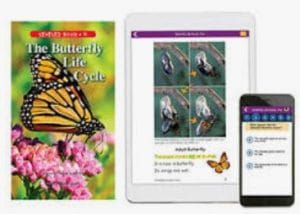How to connect with children so that their learning is deep and impactful? Developing love for reading is the essential ingredient for success. Especially in this age and time, you can teach yourself any skill or any new knowledge. As educators, we know that reading aloud is critical but what and how do we read-aloud?
Using visualization as a reading strategy is essential. According to Reading Rockets: Good readers construct mental images as they read a text.
What is Visualization: It is a reading comprehension strategy. It allows the reader to imagine and have a picture in their mind. Visualisation helps the reader understand what the character in the story is doing, thinking or feeling and it helps you visualize the detailed description of the setting.
How do you ask children to visualise? You prompt them with these cues: Visualization Cues you can use are: I see …… on the page… It makes me think that…; I imagine ….. I know this because …; I wonder…, I visualise…. because I see …… (You can create an anchor chart with these prompts)
Visualization helps transform students from passive to active readers, improving their reading comprehension while connecting their mental images with their prior knowledge making learning deep.
Why is visualisation important? Visualisation helps students and adults become:
- Analytical readers and thinkers
- Better communicators
- Scriptwriters
- Prepares them for the media business
- Marketing business
- Strategic Analysis business opportunities
Visualisation techniques have helped many successful people achieve their dreams because they have been able to practise their goals, achievements and outcomes through systematic visualisation and confidence.
Building imagery can be visual, it appeals to the sense of sight and plays the most significant role in the description in literature.
Auditory visualisation and imagery describe specific sounds that are happening within the story and can connect with one’s own experiences.
Olfactory imagery: Can describes a particular scent and lead to impactful learning especially when the reader connects the text with their personal experiences. Visualisation leads to better writers.
Some titles you can use to practice and visualize with your students are:
A Walk with Thambi by Lavanya Karthik
Mala’s Silver Anklets by Annie Besant
Rooster Raga by Natasha Sharma
 Raz Plus: has over 5,000 eBooks and printed books to help you teach all forms of reading strategies that build successful readers.
Raz Plus: has over 5,000 eBooks and printed books to help you teach all forms of reading strategies that build successful readers.
The Queen Ant’s Birthday by Alleysey Sweeney
Owen and the Tortoise by Katie Knight
Pond Life by Susan Hartley
Imagine the Beach by Racheal Rice
Fishing in the Rain by David Cockcroft
And more…